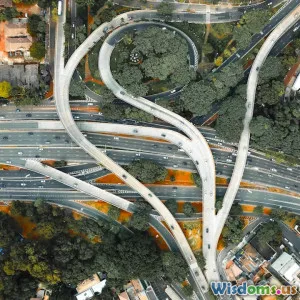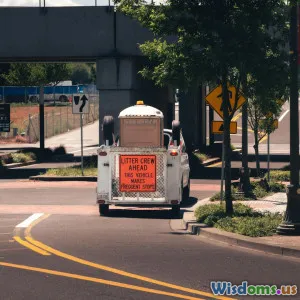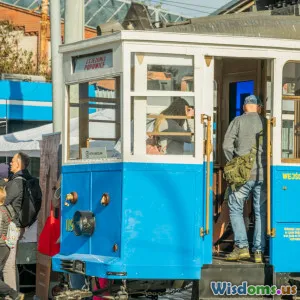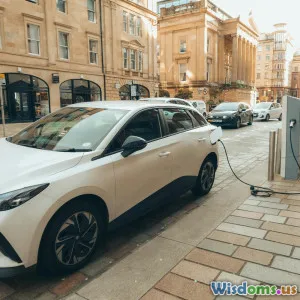
User Centric Public Transport
8 min read Explore how user-centric public transport revolutionizes urban mobility with innovative, inclusive solutions tailored for passengers. (0 Reviews)
User-Centric Public Transport: Revolutionizing Urban Mobility
In five years, will your daily commute feel like a chore, or will it transform into a seamless and pleasant part of your day? With cities expanding and populations soaring, traditional public transport has often been criticized for being inconvenient, inaccessible, or uncomfortable. Enter the era of user-centric public transport — an innovative approach championing the passengers’ needs above all else, reshaping how urban dwellers interact with transit systems worldwide.
Introduction
User-centric public transport is about shifting the focus from vehicle schedules and infrastructure alone to the daily experience of the passengers. This means crafting services that deliver convenience, accessibility, inclusivity, and real-time engagement, making public transport a competitive and preferable choice over private vehicles.
Transit systems are not just about getting people from point A to B; they’re about community well-being, reducing carbon footprints, and creating equitable access to opportunity. But how exactly do cities achieve a user-first mindset in their public transport services? Let’s delve into the transformative strategies, technologies, and examples reshaping the transit landscape.
Designing for Users: Beyond Basic Connectivity
Understanding User Needs
The foundation of user-centric public transport involves understanding diverse пользователь profiles — from daily commuters and senior citizens to tourists and persons with disabilities. Designing from a user perspective uncovers pain points such as overcrowding, confusing schedules, unsafe transit environments, or unaffordable fare costs.
For example, in Helsinki, Finland, the city employs extensive passenger feedback programs to constantly refine routes and schedules tailored to evolving commuter patterns. Similarly, in Curitiba, Brazil, the bus rapid transit system was designed with dedicated corridors to reduce travel times significantly, launched after community consultations.
Accessibility and Inclusivity
Accessibility is more than ramps and elevators; it includes real-time information in multiple languages, tactile guideways for the visually impaired, and fare systems that are affordable and simple to use. New York City, for instance, has committed billions to upgrading subway stations with elevators to improve accessibility for mobility-impaired users.
Inclusive transportation connects marginalized communities to education, healthcare, and employment. London’s Oyster card system introduced concessionary fares for students and low-income people, increasing transit equity.
Technological Innovations Elevating User Experience
Real-Time Data and Smart Apps
Technology is a game-changer. Mobile apps connected to transport networks provide up-to-date schedules, delays, and alternative routes, empowering users to make timely decisions.
Singapore’s Land Transport Authority launched the OneMotoring app integrating bus arrivals, traffic updates, and route planners, resulting in a 20% increase in public transit usage. Moreover, integrated payment apps like Apple Pay and Google Pay simplify fare collection, minimizing physical contact and long boarding queues.
Mobility as a Service (MaaS)
MaaS platforms integrate diverse transport modes — buses, trains, bike-sharing, ride-hailing — into a single digital interface. This model provides end-to-end journey planning and payment solutions.
In Helsinki, the Whim app offers unlimited multi-modal travel on subscription, allowing commuters to seamlessly switch between transport types. Studies there show a 25% modal shift from private cars to public or shared modes, highlighting the appeal of this user-focused model.
Intelligent Infrastructure
Smart streetlights, connected bus stops with digital information panels, and predictive maintenance reduce disruptions and increase rider confidence. For example, Barcelona’s smart bus stops notify passengers when the next bus arrives, while sensors monitor crowding and adjust service frequency dynamically.
Real-World Success Stories
Bogotá’s TransMilenio
An early pioneer in rapid bus transit, Bogotá focused heavily on user convenience by making stations safe, clean, and accessible. Enclosed stations with pre-paid boarding reduce delays, and extensive bicycle infrastructure connects to transit points.
A 2015 survey noted that 85% of users felt satisfied with their experience — a remarkable feat for a system transporting over two million people daily.
Tokyo Metro’s Customer Service
Toky’s transit system emphasizes cleanliness, punctuality, and customer assistance. Every station employs staff dedicated to helping elders and foreigners, and English signage is widespread, addressing user comfort alongside efficiency.
The commitment to user-centric policies has made Tokyo’s subway one of the world’s least stressful in passenger experience surveys.
Challenges and Forward Paths
Balancing Cost and Quality
Investing in infrastructure and technology can be costly — a hurdle for cities with limited budgets. However, public-private partnerships and international funding can help alleviate financial constraints.
Bridging the Digital Divide
As transport digitizes, ensuring equitable access for people without smartphones or internet connectivity is vital. Complementing tech solutions with traditional service options safeguards inclusivity.
Environmental & Social Integration
User-centric public transport should go hand in hand with green policies — such as electric buses and pedestrian-friendly urban planning — to address broader sustainability goals.
Conclusion
User-centric public transport is not merely a trend but a necessary paradigm shift for creating liveable, sustainable cities. By focusing on passengers’ real needs, integrating technology seamlessly, and making transit equitably accessible, cities can reduce congestion, lower emissions, and enrich quality of life.
The future of urban mobility is bright: informed by data, human-centered design, and bold innovation. As commuters, policymakers, and technologists collaborate, we edge closer to transport systems that don't just take us somewhere — but truly serve us along the way.
"Public transport tailored to users' needs is the backbone of smart and inclusive cities. The benefits are measurable — from affordable rides to safer streets and beyond." - Dr. Anita Kumar, Urban Mobility Expert
References
- Helsinki City Transport Reports (2023)
- Singapore Land Transport Authority, OneMotoring User Study (2022)
- TransMilenio System Review, Bogotá City Data (2019)
- London Oyster Card Impact Analysis (2021)
- Tokyo Metro Passenger Experience Survey (2020)
Rate the Post
User Reviews
Popular Posts


















